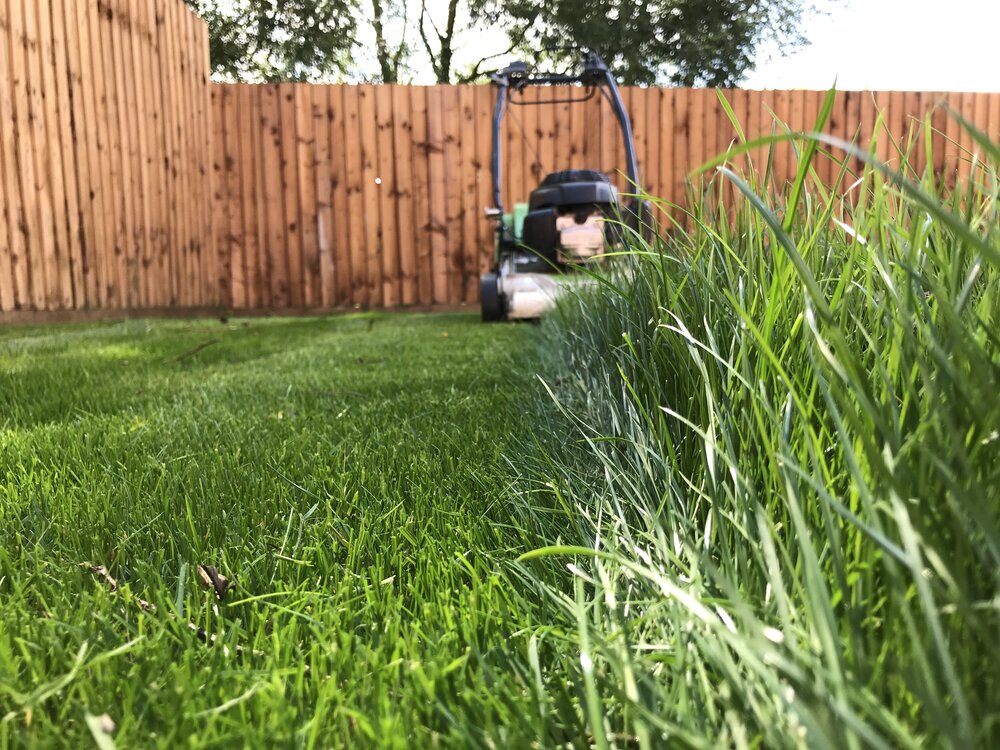Can you mow grass in the rain? That’s the question on everyone’s mind these days, as we continue to deal with flooding and heavy rains. Although rain can definitely make mowing a lawn more difficult, it doesn’t mean you can’t do it. In fact, there are a few tips and tricks you need to know if you want to try mowing your lawn in the rain. Read on to learn more about it.

What type of grass needs to be cut in the wet?
The type of grass you need to cut in the wet will depend on the climate where you live and the rain pattern. Annual grasses like Bermudagrass, Zoysia, or Poa that grow quickly and are susceptible to die-back in wet weather will need to be cut every few weeks during a wet spell.
Other types of grass like St Augustine or Paspalum will not suffer from dieback but may still need cutting every 3-4 weeks, depending on how much rain has fallen. If there is not a lot of rain, then only mowing once a week may be necessary. There are many different types of mowers for different types of grass. So it is important to consult your manual or ask someone who knows how to operate your particular mower before starting the cutting process.
Read More: Are Wolf-Garten multi-change tools any good for professional use?
How to mow grass in the wet?
Mowing grass in the wet can be a daunting task, but with the right equipment and techniques, it’s possible to get the job done. Here are four tips for mowing grass in the wet:
- Prep your lawn first. Make sure all of the grass is well-groomed, and that any irrigation systems are turned off. This will help minimize excess water Lost when you start cutting.
- Use a mulching mower. A mulching mower has blades that cut both tallgrass and shortgrass simultaneously. Which helps prevent clumping and promotes efficient use of fuel.
- Use a blade height adjustment setting that is low to reduce drag on the grass blades in wet conditions. This will also conserve energy and help keep your lawn looking neat and tidy while you mow it.
- Pace yourself carefully in wet conditions. Mowing too fast or going over areas multiple times can damage turf and leave clumps of grass behind in wet conditions.
Pros and Cons of Mowing Grass in the Wet
Mowing grass in the wet can be a daunting task, but with a little preparation and strategy, it can be done successfully. Here are some pros and cons to consider when mowing grass in the wet:
PRO:
When it rains heavily, rain water runs off the blades of the lawn mower sluggishly, reducing speed and cutting down on noise. This is great for keeping your neighbors from hearing your work, as well as preserving your lawn’s healthy sheen.
CON:
If you’re not careful, this slow cutting action can lead to an overgrowth of moss and other turf pests due to lack of exposure to sunlight. It’s important to keep an eye out for these problems while mowing in the wet; if they do occur. There are various ways to eliminate them without damaging your lawn too much.
Overall, mowing grass in the wet has its pros and cons, but by taking these into account before starting the job. Homeowners can make sure that their lawn looks great while minimizing damage.
How to mow a lawn?
If you live in a wet area, odds are you have to mow your lawn in the wet. This is because direct sunlight will dry out the grass too quickly. The best way to mow a lawn when it’s wet is to use a reel mower with a cut-off blade. You should start by cutting the grass close to the ground and then slice it higher as the reel starts to pull it through the grass.
How to adjust the height of the blade on a mower?
Mowing lawns in the rain or on days when it’s just sprinkling doesn’t have to be a chore. You can adjust your mower height to make the process easier. If you’re using a push mower, simply raise the blade off of the ground. This will reduce the amount of water that gets caught under the blades and causes them to slip. For rotary lawn mowers, open up or close the clutch to change how much the cutting area is exposed to water. Mowing with wet blades increases wear and tear on your machine. So always use caution when operating one in these conditions.
Must Read: The Smallest Riding Lawn Mowers To Fit Tight Spaces
Tips for cutting grass in the wet
If you are trying to cut grass in the wet, it is important to know how to do it correctly. Remember that the blade height should be set at 2 inches to ensure good turf coverage. Use a slower speed so that the blades can get through the water more easily. And finally, keep your hands well away from the cutting blades. They will become very hot and dangerous in wet conditions.
Conclusion
Mowing grass in the wet can be a tricky proposition, but with a little prep work, it can be done successfully.
